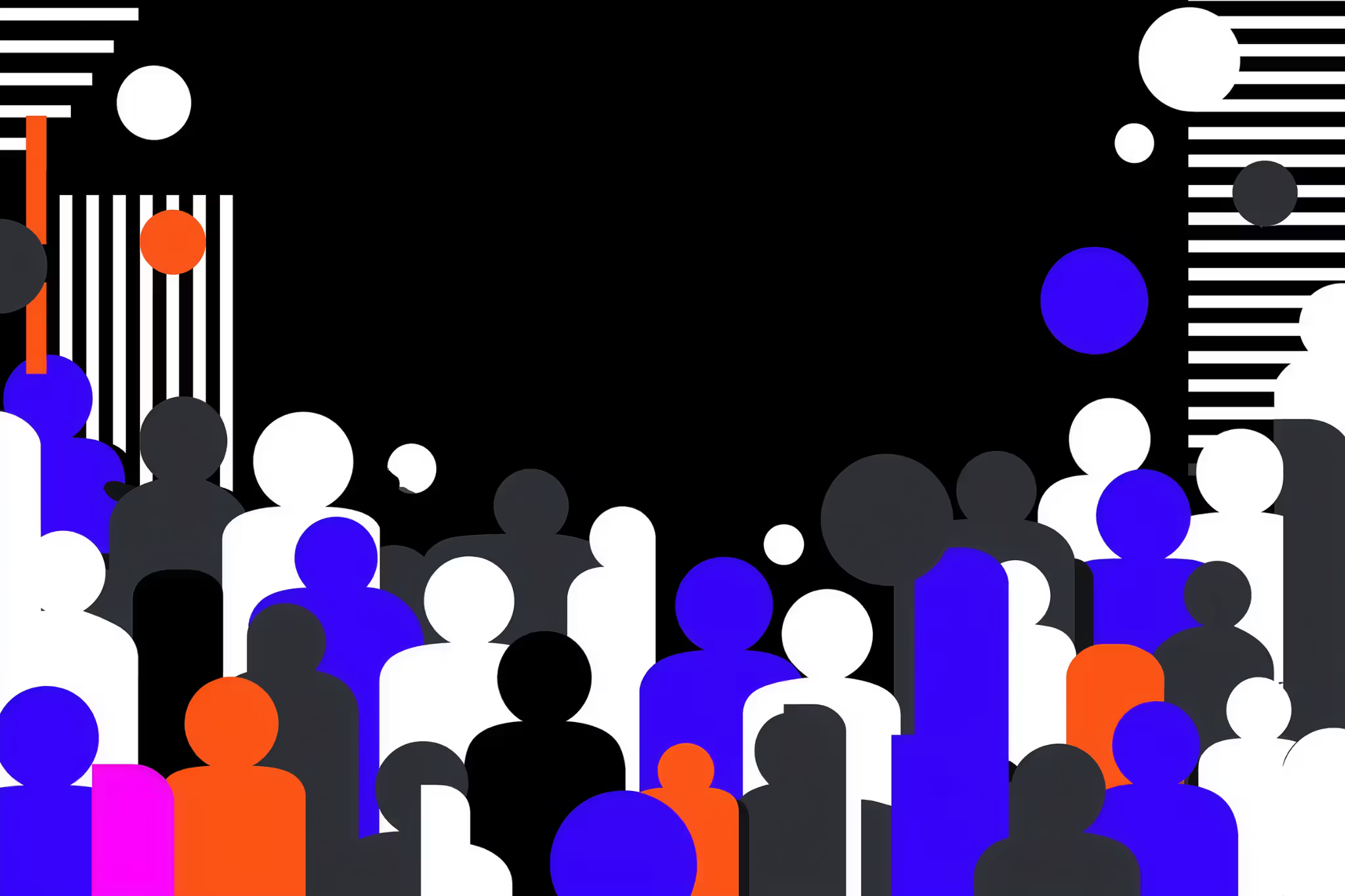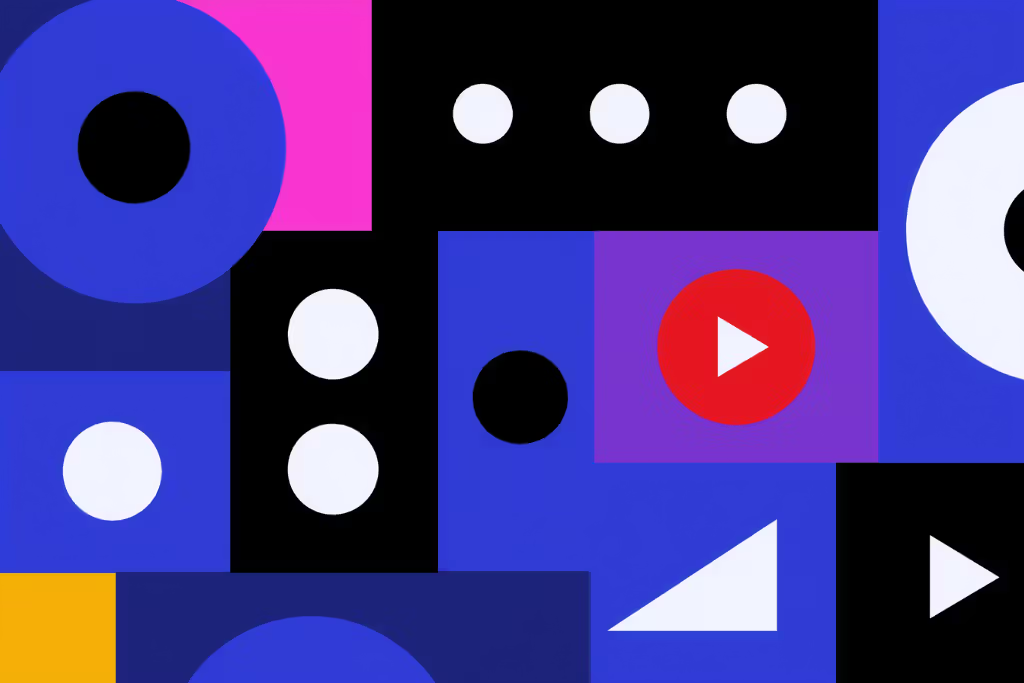The Best Way to Build an Audience from Scratch

The Best Way to Build an Audience from Scratch Without Positioning Yourself as an Expert
Building an audience without positioning yourself as an expert might seem counterintuitive. After all, conventional wisdom tells us that people follow authorities, experts, and those who have "made it." But what if I told you that some of the most engaged, loyal, and profitable audiences are built around authenticity rather than expertise?
In this comprehensive guide, you'll discover how to build an audience from scratch without being an expert, create genuine connections through authentic marketing, and develop a sustainable approach to audience growth that doesn't require you to pretend you have all the answers.
Whether you're just starting your journey or you're tired of maintaining an expert facade that doesn't feel authentic, this guide will show you exactly how to build a thriving community around your real story, your actual learning process, and your genuine value.
Table of Contents
- Why Traditional Expert Positioning Fails in Today's Market
- The Authentic Authority Framework
- The Documentation Strategy: Your Content Goldmine
- Building Your Authentic Personal Brand
- The Community-First Approach to Audience Building
- Content Strategies That Build Genuine Connection
- Overcoming Imposter Syndrome and Self-Doubt
- Monetising Your Authentic Audience
- Scaling Without Losing Authenticity
- Your 90-Day Implementation Plan
Why Traditional Expert Positioning Fails in Today's Market
Before we dive into the best way to build an audience without being an expert, it's crucial to understand why the traditional expert model is becoming less effective and, in many cases, counterproductive.
The Saturation Problem
The digital space is oversaturated with self-proclaimed experts. Every platform is flooded with people claiming to have the "secret formula," the "proven system," or the "only strategy you'll ever need." This saturation has created several problems:
Audience Fatigue: People are tired of being sold to by experts who seem disconnected from their reality. They're craving authenticity and genuine connection over polished perfection.
Trust Erosion: With so many people claiming expertise they don't actually possess, audiences have become more sceptical. They can spot performative expertise from a mile away.
Commoditisation: When everyone is an expert, no one is truly an expert in the eyes of your target audience. The expert positioning has become so common that it no longer differentiates you in the market.
The Authenticity Gap
There's a growing gap between what creators present publicly and their actual reality. This authenticity gap creates several issues:
Unsustainable Pressure: Maintaining an expert image requires constant performance. You can't show uncertainty, make mistakes, or admit when you don't know something.
Limited Growth: When you position yourself as having arrived, you limit your ability to learn and grow publicly, which is essential in marketing. Your content becomes stale because you're afraid to explore topics that might challenge your authority.
Shallow Relationships: Expert positioning creates a one-way relationship where you're the teacher and your audience are students. This prevents the deep, collaborative relationships that drive real engagement and loyalty.
The Shift Towards Authentic Marketing
Today's audiences are increasingly sophisticated. They value:
- Transparency over perfection: People want to see the real process, including the struggles and failures.
- Journey over destination: Focus on the process of growing an audience online.: Audiences are more interested in the path than the arrival point.
- Community over hierarchy: People want to feel part of a community rather than sitting at the feet of a guru, especially when growing an audience.
- Growth over static knowledge: Audiences prefer following someone who's actively learning and growing rather than someone who claims to have all the answers.
This shift represents a massive opportunity for creators who are willing to embrace authentic marketing and build an audience without being an expert.
The Authentic Authority Framework
Authentic authority is the foundation of building an audience without being an expert. It's about establishing influence and trust not through claims of expertise, but through genuine value, consistent sharing, and authentic connection.
The Four Pillars of Authentic Authority
Pillar 1: Transparency
Transparency means being open about where you are in your journey, what you're learning, and what you still don't know. This doesn't mean oversharing or being unprofessional—it means being honest about your current reality.
Transparency helps you build trust because it shows you're not trying to deceive your audience. When you're transparent about your limitations, people trust you more when you share your insights.
Pillar 2: Value-First Mindset
Instead of positioning yourself as the expert, position yourself as someone committed to providing value. This means focusing on what you can give rather than what credentials you have.
Value can come in many forms: sharing your learning process, asking great questions, curating useful resources, facilitating connections, or simply being encouraging and supportive.
Pillar 3: Community Building
Rather than building an audience that looks up to you, build a community that learns together. Position yourself as a facilitator and fellow traveller rather than the destination.
This approach creates stronger engagement because people feel like participants rather than passive consumers. They're more likely to share, comment, and recommend you to others in your email list.
Pillar 4: Continuous Learning
Embrace being a student. Share what you're learning, the books you're reading, the experiments you're trying, and the results you're getting. This keeps your content fresh and your audience engaged.
When you're learning publicly, you never run out of content. Every day brings new discoveries, insights, and experiences to share.
The Guide vs. Expert Mindset
To build an audience without being an expert, you need to shift from an expert mindset to a guide mindset:
Expert Mindset:
- "I have the answers"
- "Follow my proven system"
- "I've arrived at the destination"
- "Learn from my success"
Guide Mindset:
- "Let's figure this out together"
- "Here's what I'm learning"
- "I'm on the journey with you"
- "Let's learn from our experiments"
This shift changes everything about how you create content, engage with your audience, and build your business.
The Documentation Strategy: Your Content Goldmine
One of the most powerful ways to build an audience without being an expert is through documentation. Instead of teaching what you've already mastered, you document what you're currently learning and experiencing.
What Documentation Looks Like
Documentation content includes:
Learning Updates: Sharing what you're studying, the courses you're taking, and the insights you're gaining is a great way to build an audience.
Experiment Reports: Documenting the tests you're running, the hypotheses you're exploring, and the results you're seeing.
Behind-the-Scenes Content: Showing the real process behind your work, including the messy parts, the failures, and the iterations.
Progress Updates: Sharing your journey towards specific goals, including the setbacks and breakthroughs along the way.
Resource Sharing: Curating and sharing the tools, articles, videos, and resources that are helping you learn and grow.
The Documentation Framework
Here's a simple framework for creating documentation content:
Step 1: Choose Your Learning Focus to attract your target audience. Pick one area where you're actively learning or growing. This could be a new skill, a business challenge, a personal goal, or a professional development area.
Step 2: Set Learning Goals Define what you want to learn or achieve in this area. Make these goals specific and time-bound so you can track and share your progress.
Step 3: Document the Process Share your learning process regularly. This includes:
- What you're studying and why
- The challenges you're facing
- The insights you're gaining
- The experiments you're trying
- The results you're seeing
Step 4: Invite Participation Ask your audience to join the journey. Invite them to share their own experiences, ask questions, and contribute to the learning process.
Step 5: Reflect and Share Lessons Regularly reflect on what you're learning and share the key insights with your audience. This helps consolidate your own learning while providing value to others.
Why Documentation Works for Audience Building
Documentation is incredibly effective for building an audience without being an expert because:
- It's Authentic: You're sharing your real experience, not a polished version of reality.
- It's Relatable: Your audience can see themselves in your journey and feel like they can achieve similar results.
- It's Engaging: People love following along with someone's journey, especially when it's authentic and engaging. It creates natural suspense and investment in your success.
- It's Sustainable: You never run out of content because you're always learning and growing.
- It Builds Community: When you're learning publicly, others join the journey and create a community around shared exploration.
Building Your Authentic Personal Brand
Your personal brand is how people perceive you and what they expect from you. When building an audience without being an expert, your brand should be built around authenticity, growth, and value rather than credentials and achievements.
The Elements of an Authentic Personal Brand
Your Story: What's your journey? What challenges are you facing? What are you working towards? Your story should be honest, relatable, and ongoing.
Your Values: What do you stand for? What principles guide your decisions? Your values should be evident in everything you share and do.
Your Perspective: What's your unique viewpoint on your industry or area of focus? What do you see differently than others?
Your Personality: What makes you uniquely you in the context of growing an audience online? Don't try to be someone else—embrace your natural personality and let it shine through your content.
Your Mission: What are you trying to achieve? How are you trying to help others? Your mission should be bigger than just building an audience or making money.
Crafting Your Authentic Brand Message
Your brand message should communicate:
- Where you are: Be honest about your current position and level of experience.
- Where you're going: Share your goals, aspirations, and the direction you're heading.
- Why it matters: Explain why your journey is relevant to your audience and how they can benefit from following along.
- How you're different: Highlight what makes your approach, perspective, or journey unique.
Here's an example of an authentic brand message:
"I'm a marketing professional who's tired of the 'fake it till you make it' mentality. I'm documenting my journey to build a sustainable business through authentic marketing and genuine community building. I don't have all the answers, but I'm committed to sharing what I'm learning and building something real together with my community."
Consistency Across Platforms
Your authentic brand should be consistent across all platforms, but adapted to each platform's unique characteristics:
LinkedIn: Professional but personal, focusing on business insights and career growth.
Instagram: Visual storytelling, behind-the-scenes content, and personal moments.
Twitter: Real-time thoughts, quick insights, and community engagement can significantly enhance your marketing strategy.
YouTube: In-depth exploration of topics, tutorials based on your learning, and longer-form storytelling.
Your Blog: Comprehensive guides, detailed case studies, and thoughtful analysis.
The key is maintaining your authentic voice and core message while adapting the format and tone to each platform's audience and expectations.
The Community-First Approach to Audience Building
Traditional audience building focuses on growing follower numbers. The community-first approach focuses on building genuine relationships and creating value for the people who are already following you.
Shifting from Audience to Community
Audience Mindset:
- Focus on follower count
- One-way communication
- Broadcasting content
- Seeking validation through metrics
Community Mindset:
- Focus on engagement quality
- Two-way conversation
- Facilitating discussion
- Creating value for members
Building Community Through Authentic Marketing
Start Conversations, Don't Just Share Content Instead of simply posting content, create content that invites discussion and engagement. Ask questions, share dilemmas, and invite your community to contribute their thoughts and experiences.
Respond Meaningfully to Comments Don't just like comments or give generic responses. Take time to provide thoughtful replies that continue the conversation and show you value your community's input.
Highlight Community Members Share and celebrate your community members' successes, insights, and contributions. This makes people feel valued and encourages others to participate more actively.
Create Shared Experiences Organise live sessions, challenges, or collaborative projects that bring your community together around shared goals or interests.
Be Vulnerable and Human Share your struggles, failures, and uncertainties. This creates deeper connections and gives others permission to be authentic as well.
The Engagement Multiplication Effect
When you focus on building a genuine community rather than just growing follower numbers, you create an engagement multiplication effect:
Quality Over Quantity: A smaller, engaged community is more valuable than a large, passive audience.
Organic Growth: Engaged community members become advocates who naturally share your content and recommend you to others.
Valuable Feedback: An engaged community provides honest feedback that helps you improve your content and offerings.
Sustainable Motivation: Building genuine relationships is more fulfilling and sustainable than chasing vanity metrics.
Content Strategies That Build Genuine Connection
Creating content that builds a genuine connection requires a different approach than traditional expert content. Here are specific strategies for building an audience without being an expert through the creation of authentic content.
The Learning-in-Public Strategy
Share your learning process in real-time:
Study Sessions: A way to build your audience through shared learning experiences. Share what you're reading, watching, or studying, along with your key takeaways to engage your subscriber base.
Experiment Updates: Document the tests you're running and share results as they come in.
Skill Development: Show yourself learning new skills, including the struggles and breakthroughs.
Course Reviews: Share honest reviews of courses, books, or resources you're using.
The Behind-the-Scenes Strategy
Give your audience a genuine look at your process:
Work-in-Progress: Share projects while you're working on them, not just the finished results.
Decision-Making: Guide your audience through the important decisions you're making and solicit their input.
Daily Routine: Show what your actual workday looks like, including the mundane parts.
Failures and Setbacks: Share what doesn't work and what you're learning from failures.
The Question-First Strategy
Lead with curiosity rather than answers to effectively engage and build your audience.
Ask Better Questions: Instead of providing answers, ask thought-provoking questions that prompt your audience to think critically.
Crowdsource Solutions: When you're facing a challenge, ask your community for their ideas and experiences.
Explore Together: Select topics to explore with your audience, building a community from scratch while learning and discovering together as a group.
Challenge Assumptions: Question conventional wisdom and invite your audience to think critically about accepted practices.
The Resource Curation Strategy
Become a valuable filter and curator for your community:
Weekly Roundups: Share the best content you've discovered each week with your commentary.
Tool Reviews: Test and review tools, sharing honest assessments of their value.
Book Summaries: Share key insights from books you're reading.
Industry Analysis is crucial for understanding how to grow your audience.: Curate and analyse trends, news, and developments in your field.
The Story-Driven Strategy
Use storytelling to create an emotional connection:
Personal Anecdotes: Share relevant personal stories that illustrate larger points.
Client Stories: With permission, share stories about people you're helping (anonymised if necessary).
Historical Examples: Use stories from history or other industries to illustrate principles.
Metaphors and Analogies: Use storytelling devices to make complex concepts more relatable.
Overcoming Imposter Syndrome and Self-Doubt
One of the biggest challenges in building an audience without being an expert is overcoming the feeling that you're not qualified to share your thoughts or experiences. Here's how to work through these challenges.
Reframing Imposter Syndrome
From "I'm Not Qualified" to "I'm Learning" Instead of thinking you need to be qualified to share, remember that you're sharing your learning journey, not claiming to be an expert.
From "I Don't Know Enough" to "I Know Something" about building an authentic audience. You don't need to know everything to provide value. You just need to know something that might be helpful to someone who's a step behind you on the journey.
From "Who Am I to Share This?" to confidently sharing your journey to build an audience. If you've learned something valuable, you've a responsibility to share it with others who may benefit.
Building Confidence Through Action
Start Small: Begin by sharing small insights or observations. Build confidence gradually rather than trying to create comprehensive content immediately.
Focus on Service: Instead of focusing on whether you're qualified, focus on how you can serve your audience. What value can you provide?
Embrace Beginner's Mind: Remember that being a beginner is an advantage. You remember what it's like to not know something, which makes you a better guide for others.
Document Your Growth: Keep track of your progress and growth. This helps you see how far you've come and builds confidence in your journey.
The Permission Framework
Give yourself permission to:
Be Imperfect: You don't need to have everything figured out to provide value.
Change Your Mind: It's okay to evolve your thinking and share that evolution with your audience.
Ask Questions: Admitting you don't know something is a strength, not a weakness.
Learn Publicly: Your learning process is valuable content, even if you haven't reached the destination yet.
Be Human: Your audience wants to connect with a real person, not a perfect facade.
Monetising Your Authentic Audience
Building an audience without being an expert doesn't mean you can't monetise your community. In fact, authentic audiences often convert better than those built around expert positioning because the relationships are deeper and more trusting.
Monetisation Strategies for Authentic Creators
Service-Based Offerings Instead of positioning yourself as the expert consultant, offer services as a guide or facilitator:
- Learning Partnerships: Offer to learn alongside clients, tackling challenges together.
- Implementation Support: Help clients implement strategies, providing accountability and support rather than just advice.
- Facilitation Services: Help groups or organisations work through challenges using your facilitation skills.
- Research and Analysis: Offer to research and analyse topics for clients, sharing the learning process.
Product-Based Offerings Create digital products that reflect your authentic approach:
- Learning Journals: Create templates and frameworks for others to document their own journeys.
- Resource Collections: Curate and package valuable resources around specific topics.
- Process Documentation: Turn your documented processes into step-by-step guides others can follow.
- Community Access: Create paid communities where members can learn and grow together.
Educational Content Teach what you're learning as you learn it:
- Live Learning Sessions: Host sessions where you learn something new and share the process in real-time with your target audience.
- Course Creation: Create courses based on your documented learning journey.
- Workshops: Facilitate workshops where participants learn together rather than just from you.
- Mentorship Programs: Offer mentorship that focuses on growth and learning rather than expert advice.
The Trust Advantage
Authentic audiences often convert better because:
Higher Trust: When you've been transparent about your journey, people trust your recommendations more.
Better Fit: Your audience self-selects based on resonance with your authentic message, leading to better client fit.
Deeper Relationships: Authentic connections lead to longer-term client relationships and more referrals.
Value Alignment: Clients who are attracted to your authentic approach are more likely to value the same things you do.
Scaling Without Losing Authenticity
As your audience grows, maintaining authenticity becomes more challenging but not impossible. Here's how to scale while staying true to your authentic approach and grow your audience.
Maintaining Personal Connection at Scale
Regular Live Interactions: Host regular live sessions where you can interact directly with your community.
Personal Responses: Continue to respond personally to comments and messages, even if you can't respond to all of them.
Behind-the-Scenes Content: Keep sharing behind-the-scenes content that shows the real you, even as your business grows.
Community Moderation: As your community grows, maintain the culture by actively moderating and setting the tone.
Systematising Authenticity
Content Frameworks: Develop frameworks for creating authentic content that you can use consistently.
Team Training: If you hire team members, train them on your authentic approach and values.
Quality Standards: Maintain quality standards that reflect your commitment to authenticity and value.
Regular Reflection is essential for understanding how to better serve your audience online.: Regularly assess whether your content and approach still feel authentic to you to effectively build your audience.
Avoiding the Expert Trap as You Grow
Stay Curious: Continue learning and growing publicly, even as your audience sees you as more knowledgeable.
Acknowledge Growth: Be transparent about how you've grown while maintaining humility about what you still don't know.
Invite Challenge: Encourage your audience to challenge your thinking and share different perspectives.
Maintain Beginner's Mind: Regularly put yourself in situations where you're a beginner again.
Your 90-Day Implementation Plan
Here's a practical 90-day plan for building an audience without being an expert using the strategies outlined in this guide.
Days 1-30: Foundation Building
Week 1: Define Your Authentic Brand
- Clarify your story, values, and mission to resonate with your subscribers.
- Identify your learning focus areas
- Create your authentic brand message
- Set up your content creation system
Week 2: Start documenting your journey to build an audience
- Begin sharing your learning process
- Create your first behind-the-scenes content
- Ask your first community questions
- Establish your content rhythm
Week 3: Engage and Connect
- Focus on meaningful engagement with your existing audience
- Start conversations rather than just broadcasting
- Share your first vulnerable or uncertain moment
- Begin building genuine relationships
Week 4: Refine and Adjust
- Analyse what content resonated most
- Adjust your approach based on feedback to ensure you are building an authentic audience
- Deepen relationships with engaged community members
- Plan for month two
Days 31-60: Community Building
Week 5-6: Expand Your Documentation
- Share more detailed learning processes
- Create your first comprehensive resource
- Invite community participation in your learning
- Start highlighting community members
Week 7-8: Deepen Engagement
- Host your first live session or Q&A
- Create collaborative content with community input
- Share a significant challenge or setback
- Facilitate connections between community members
Days 61-90: Growth and Monetisation
Week 9-10: Scale Your Impact
- Create your first substantial piece of educational content
- Launch a small community initiative or challenge
- Begin exploring monetisation opportunities
- Develop systems for maintaining authenticity at scale
Week 11-12: Establish Sustainability
- Implement systems for consistent content creation
- Launch your first authentic offering (if ready)
- Plan for long-term growth
- Reflect on your journey and share lessons learned
Daily Habits for Success
Morning: Spend 15 minutes learning something new and documenting insights.
Midday: Engage meaningfully with your community for 10-15 minutes.
Evening: Reflect on the day and identify potential content or insights to share.
Weekly: Create content that provides real value to your community.
Monthly: Assess your progress, gather feedback, and adjust your approach as needed.
Conclusion: Your Authentic Authority Journey Begins Now
Building an audience without being an expert isn't just a content strategy—it's a fundamentally different approach to creating value and building relationships online. It's about embracing your humanity, sharing your real journey, and creating genuine connections with people who resonate with your authentic message.
The strategies in this guide will help you build a loyal, engaged community that trusts you not because you claim to have all the answers, but because you're committed to finding them together. This approach is more sustainable, more fulfilling, and often more profitable than traditional expert positioning.
Remember, you don't need to be an expert to provide value. You just need to be authentic, committed to growth, and focused on serving your community while building your email list. Your audience isn't looking for perfection—they're looking for connection, honesty, and someone who understands their journey because you're on a similar path.
The world doesn't need more experts. It needs more authentic guides who are willing to share their real journey, their genuine discoveries, and their honest struggles. It needs people like you who are committed to building something real and valuable.
Your authentic authority journey starts now. The question isn't whether you're qualified to begin—it's whether you're ready to be authentic about where you are and committed to sharing your journey with others who can benefit from your experience.
Are you ready to build an audience without being an expert? Are you ready to embrace authentic marketing and create genuine connections? Are you ready to become the guide your community needs?
The path is clear. The strategies are proven to help you grow your audience effectively. The only thing left is to take the first step and start building your loyal following the authentic way.
Ready to explore topics deeper and build your online audience?
Download my free Non-Expert's Starter Kit, which includes the complete 5-step documentation framework, 50 content ideas for non-experts, strategies for overcoming imposter syndrome, and a detailed roadmap for building authentic authority.
This comprehensive guide will give you everything you need to start building your audience through authentic sharing rather than expert positioning, helping you reach your goals through genuine connection and value creation.
[Download The Non-Expert's Starter Kit →]
What's your biggest challenge in building an authentic audience? Share in the comments below—I read and respond to every comment, and your question might inspire my next article.
You don’t need to know it all — just show up.
If you’ve been stuck waiting to feel “ready,” this is your sign. You don’t need a polished plan or a perfect offer. You just need to start documenting the journey.
Short heading goes here
Lorem ipsum dolor sit amet, consectetur adipiscing elit.











Lorem ipsum dolor sit amet, consectetur adipiscing elit. Suspendisse varius enim in eros elementum tristique. Duis cursus, mi quis viverra ornare, eros dolor interdum nulla, ut commodo diam libero vitae erat. Aenean faucibus nibh et justo cursus id rutrum lorem imperdiet. Nunc ut sem vitae risus tristique posuere.
Lorem ipsum dolor sit amet, consectetur adipiscing elit. Suspendisse varius enim in eros elementum tristique. Duis cursus, mi quis viverra ornare, eros dolor interdum nulla, ut commodo diam libero vitae erat. Aenean faucibus nibh et justo cursus id rutrum lorem imperdiet. Nunc ut sem vitae risus tristique posuere.